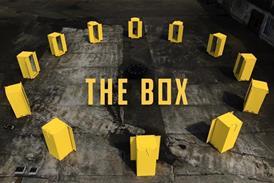The idea to remake the iconic 1970s series Survivors was BBC executive producer Sue Hogg's. She rightly saw it would be timely following the outbreak of the Sars virus, bird flu and all the reports that we are overdue a flu pandemic.
Sue persuaded writer Adrian Hodges to update the show.Survivors is a character-based drama showing ordinary people surviving in an extraordinary, challenging and sometimes terrifying and violent world. With his track record in character-based dramas such as Charles II and The Sally Lockhart Mysteries, Adrian was just the man for the job.
When I came on board there was already a first draft 60-minute script, and it was an exciting read. With the support of BBC drama productions -director Nicolas Brown - and drama series and serials -controller Kate Harwood - Survivors for a new generation would be made in-house.
As a child, Survivors was my first “appointment to view” series in the pre-VCR era. Remaking such an iconic show was very scary. A quick Google search revealed what a passionate and committed fan base the original series still had. Adrian made me promise not to watch the original again and in retrospect I fully understand why.
We decided on a 90-minute film to open, telling the story of the pandemic and bringing all our central characters together, followed by a series of one-hour episodic stories about their lives, post-pandemic.
Choosing a shooting format was one of the first decisions to be made. As Super 16 was no longer viable due to HD transmission requirements, our choice was HD or 35mm.
I had already produced two series shot on HD but was concerned that low light levels - there's no electricity in the post-pandemic world - and lots of exteriors in a shoot continuing into October would not make HD the obvious choice. After much debate and negotiation by line producer Diana Barton, we persuaded everyone that we could make it work on 35mm.
So, with John Alexander on board to direct the opening film, a top ensemble of actors and Will Hughes-Jones as designer, we set off to Manchester to -create a world with no people. In reality this was less difficult than we had imagined - the streets are always quiet at 4am on a Sunday morning. We shot an aerial sequence of one of our survivors driving his car at speed around the deserted city centre. It really sells the idea that the population of the city has died. An early call, but we needed almost no CG to clear the frame, other than to remove a few lights that were still on. Later in the series, our CG budget was required as the city started to flood and fires burn.
On location, 35mm was actually far easier than I'd anticipated. Somehow I'd expected monster cameras and hordes of technicians. In reality, you have to look pretty closely to see any difference from Super 16. Essentially the camera magazines are wider but otherwise it's as flexible and manageable as Super 16 and, for a production that was predominantly hand-held, it offered no compromise.
And, of course, the rushes looked gorgeous. When we had our cast and crew screening on a huge screen in Manchester - from an HD master - the finished product looked stunning. This was thanks largely to director of photography Tony Miller who we chose on the strength of his work on BBC drama The Passion. He set the bar very high for the DoPs who followed.
A big technical challenge was the soundscape. Imagine a city with no traffic, no trains, no planes, no air-con units: all the usual atmos tracks that enable you to cover the noisy dialogue tracks you are able to record on a location. Recordist Chris Atkinson accepted the challenge. Some days were more of a hurdle than others and the team at Boom worked marvels in post. The silence of the post-pandemic world is unsettling.
A greater, and more familiar, challenge was the weather. We wanted a new dawn in this post-pandemic world, a world that had beauty against the ugliness of the event. Unfortunately we were shooting in Manchester during one of the worst summers in recent memory.
One of our key locations, a house in Helmshore where our survivors hole up, was absolutely in keeping with our brief - lush and green. When I first went out there to recce the location, in the excitement I overlooked the fact that foliage is lush because of the constant rain.
Thank heavens for all that amazing technology in telecine these days. When I sit in a suite with a talented colourist like Aidan Farrell I do wonder why on earth we spend so much time lighting...
Survivors is a BBC drama production for BBC1. The series begins on 23 November at 9pm.
Hugh Warren: My tricks of the trade
Choose the right team: it's much more fun when they have lots of talent and not so much ego. Get the chemistry right, sit back, enjoy the experience and take the credit at the end.
The mobile wardrobe - aka the car boot. Always carry those waterproofs, boots and fleeces you would never wear otherwise. You won't have to put them on unless absolutely necessary.
Befriend the costume designer. The wardrobe
trailer is a warm dry retreat, with decent coffee-making facilities. It's also the place to catch up on all the gossip.
Imodium. The misnamed “honey wagon” is to be avoided at all costs.






























No comments yet